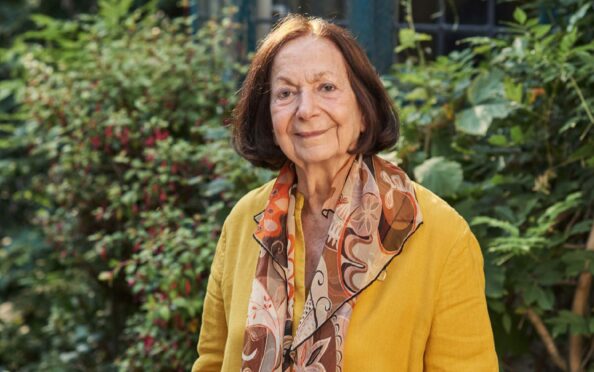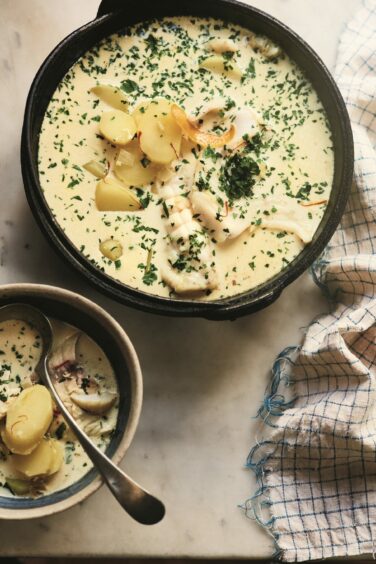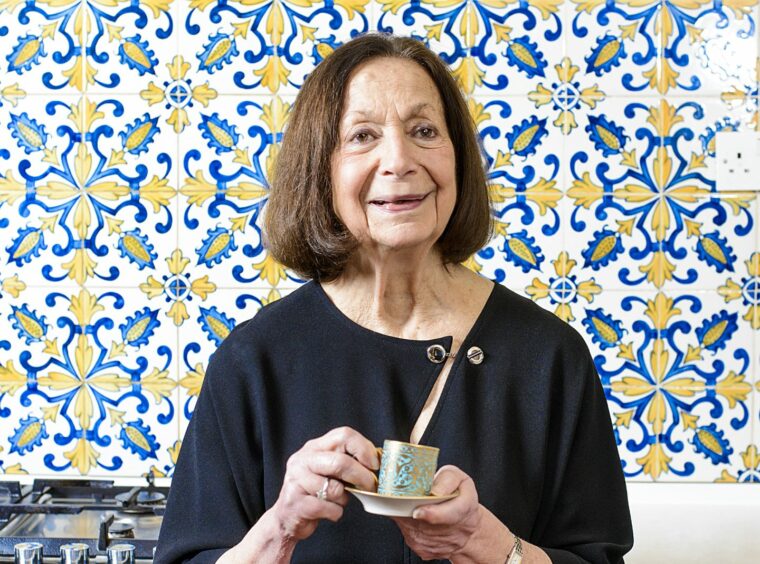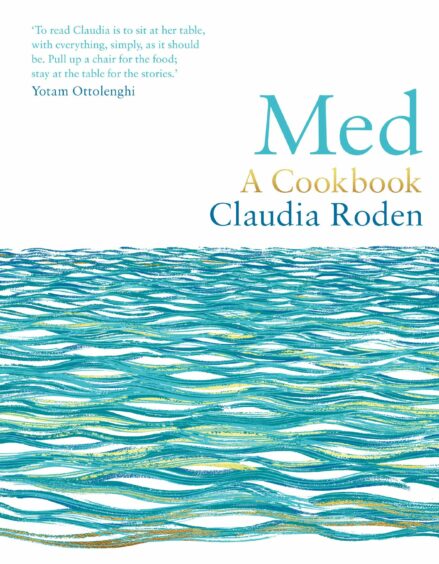
Veteran food writer Claudia Roden is reaching a major milestone birthday just days after we speak, and she is in disbelief.
“Well, I just can’t imagine that I’m 85,” the author of more than 20 cookbooks, who was born in Cairo, tells me on a Zoom call, sitting in the study of her North London home, rows and rows of books lining the wall behind her.
“I thought I would forget things about my travels. But then suddenly it all comes back. When I cook, for instance, something with fried garlic and crushed coriander, then memories of Egypt come, and I just feel happy.”
Having relocated with her parents to London in the 1950s, Roden began her career focusing on Middle Eastern food, before turning her attention to the Mediterranean, an area she is revisiting with her latest book, called simply Med.
Love of the Med
Her love affair with the Mediterranean stretches back to her early childhood, when her family holidayed in Alexandria on Egypt’s coast and she found the city joyous.
She remembers: “Cairo was strict and prudish – Alexandria was the opposite. The kind of life that was there was, for me, something wonderful and happy. I just felt that the Mediterranean was where I wanted to be.”
After her marriage of 15 years had ended in 1974, and her three children left home, she decided to head back to the Med.
“When my children left home, they all left on the same day so I decided I would leave on the same day as well,” she says.
And so began decades of foodie adventures, crisscrossing the countries that bordered the sea, munching her way through the kitchens of southern France and Spain, the islands of Italy, as well as North Africa, Syria and Turkey.
She says: “For me, travelling to research the food was a way to be acceptable as a woman at that time.
“As a woman, travelling alone was considered peculiar or rather strange and suspect. People were always asking me, ‘Where’s your husband?’ or ‘Haven’t you got children?’ That, for me, was an adventure – an adventure that never ended.
“I found when I travelled, especially in the Mediterranean, at that time everybody was glad to speak about food. Everybody was there, outside in the piazza, looking for somebody to chat with, have a conversation.
“It doesn’t work anymore because now everybody has a mobile phone and they don’t want to be disturbed.”
Her classic Mediterranean Cookery was first published in 1987 but three decades on, when she had reached her eighties and wanted to bring the culinary delights of the area to the next generation, she decided against venturing out on another expedition.
Instead, she decided to go on doing what she loved most – cooking and having friends and family round her kitchen table. The aim of her book, Med, was to find the dishes mined from her memory or, as she calls them, “remembered magic moments” that gave them the most pleasure.
Five years in the making, the book was completed during the pandemic, when she enlisted the help of her three children – Simon, Nadia and Anna – and six grandchildren to test and sample recipes.
Family and friends would gather in Roden’s garden to gobble fragrant spiced rice and roasted veg, warming lentil soups, meaty Spanish stews, Arabic-inspired filo pastry parcels, steaming bowls of seafood spaghetti and more.
She says: “When it was raining, they even came with umbrellas. I have photos of them sitting and eating under umbrellas. My garden was the only place where they could meet each other.”
Cooking during Covid
Being separated from friends was “the hardest part” of the Covid restrictions for Roden, but beavering away in her kitchen and study kept her from “getting miserable…I didn’t feel either lonely or unhappy”.
Now that lockdown has ended, the octogenarian is looking forward to celebrating her birthday with a dinner party at her daughter’s house.
So will she be putting her feet up and leaving the cooking to someone else?
“We’re all going to cook for my birthday – I’m cooking as well,” Roden says with a smile.
And there’s certain to be music, chosen to evoke treasured memories from a lifetime of globetrotting.
“When I travelled, I always bought music. In Italy, it was all Pavarotti, I would put on O Sole Mio. When I’m cooking French dishes, I’m putting on Edith Piaf and singing La Mer. And then I’ve got Arab music, I’ve got Spanish music…I just think cooking a dish from somewhere, it really makes you feel good. It makes you feel that place.”
Recipe: Claudia’s Catalan fish soup

Called bullinada in Spanish, this creamy soup is a flavoured with white wine and garlic.
“The Catalan bullinada is a fish soup with garlic mayonnaise stirred in,” says Claudia.
“It has a mysterious, delicate flavour and a beautiful warm colour.”
The food writer suggests using fish such as hake, monkfish or cod cheeks, and adding squid or prawns if you like.
You’ll need
- 1 large onion, chopped
- 2 tbsp olive oil
- 8 garlic cloves: 6 finely chopped and 2 crushed
- good pinch of saffron threads
- 2 litres fish stock (use 3 fish stockpots)
- 100ml dry white wine
- 800g new potatoes, peeled and cut into 1.5cm slices
- 1 tsp fennel seeds
- strips of peel from ½ orange
- 800g skinless fish fillets, such as hake or monkfish
- 200ml good-quality bought mayonnaise
- juice of ½ lemon
- good pinch of chilli pepper, plus extra to serve
- 4 tbsp chopped flat-leaf parsley
- salt and black pepper
Method
In a wide pan, fry the onion in the oil over low heat, stirring occasionally, for 5 minutes until it begins to soften. Add the chopped garlic and stir for 2 minutes until it just begins to colour.
Stir in the saffron and pour in the fish stock and the wine, then put in the potatoes, fennel seeds and orange peel and season with salt and pepper. Simmer, covered, for 20–25 minutes until the potatoes are tender.
Ten minutes before you are ready to serve, remove the orange peel and put in the fish. Cook, covered, over low heat for 4–10 minutes, depending on the fish and the thickness of the fillets, until the fish becomes opaque and the flesh begins to flake when you cut into it with a pointed knife. Break the fillets into pieces.
In a jug, beat the mayonnaise with the lemon juice, the crushed garlic and a pinch of chilli.
Just before serving, add a ladleful or two of the hot stock into the mayonnaise mixture and beat it in, then gently stir into the simmering soup. Heat through but do not let it boil or the mayonnaise will curdle. Serve sprinkled with parsley and pass round some chilli for anyone who would like to add more.
Med by Claudia Roden, photography by Susan Bell, is published by Ebury Press, priced £28. Available now

Enjoy the convenience of having The Sunday Post delivered as a digital ePaper straight to your smartphone, tablet or computer.
Subscribe for only £5.49 a month and enjoy all the benefits of the printed paper as a digital replica.
Subscribe © Press Association Images
© Press Association Images © Press Association Images
© Press Association Images